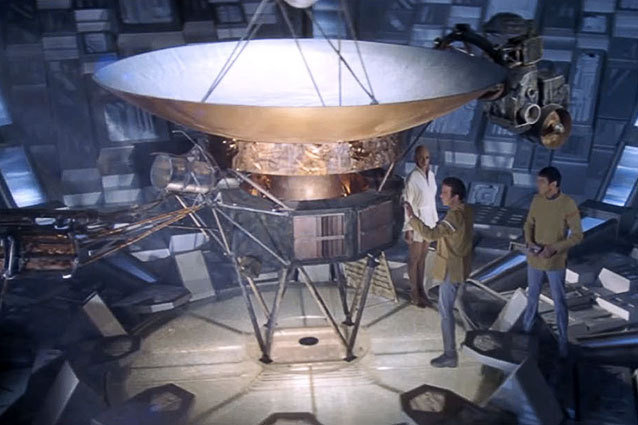
In 1977, Voyager 1 was launched from Florida’s Kennedy Space Center. Its 35-year mission: to explore Jupiter and Saturn, to seek out the edge of the solar system, to boldly go where no probe…well, you know.
Needless to say it’s been awhile since Voyager 1 has been in the news. However, an article published in the Geophysical Research Letters journal of the American Geophysical Union reports that the probe has accomplished something no previous spacecraft has achieved: it’s left the solar system for interstellar space, marking the farthest humankind has ever reached into the cosmos. Though Voyager 1 is 17 billion miles from Earth — to put it in perspective, Pluto is only 3.7 billion miles away — it’s still transmitting data back to researchers who’re following its progress. The distance is so vast that, though its radio waves travel at the speed of light, it still takes 17 hours for each transmission package to reach Earth. On Aug. 25, 2012 researchers noted that the probe’s sensors picked up a sudden doubling of the cosmic radiation found in surrounding space, indicating that it had left the heliosphere, the protective bubble of the solar system in which the sun’s rays keep at bay much harsher cosmic radiation. In short, it had entered interstellar space. NASA disputes these finds, however, saying that the probe hasn’t left our solar system just yet.
We know 17 billion miles seems like a really long distance, but we here at Hollywood.com consider astronomy within our skill set, so we calculated how long (at the rate of 17 billion miles per 35 years) it would take to reach the nearest star to our solar system, Proxima Centauri, located about 25.44 trillion miles away. The journey time would be 53,090 years. Which means we need a warp drive, stat!
Get Thee to the Geek: How ‘DS9’ Became the Best ‘Trek’
Speaking of Star Trek, Voyager’s final outcome may be prophesied in Star Trek: The Motion Picture. In the film, the probe (okay, it’s really the fictional Voyager 6 for you nitpicker nerds, but it looks exactly like Voyager 1, and it clearly inspired the 1979 flick with its launch just two years earlier) gets sucked into a black hole after leaving our solar system, and it emerges on the far side of the galaxy. There it encounters a technologically-advanced, silicon-based race that identifies with Voyager’s sole directive: to seek out knowledge. They upgrade its processors and gift it with sentience. As soon as it’s self-aware, Voyager wants what all beings endowed with consciousness desire: to understand its origins.
So, having amassed a gigantic space cloud around it for protection, Voyager returns to Earth to seek out its maker and learn of the reason for its existence. The only problem is that its maker, NASA, no longer exists, having long since been replaced by Starfleet. And the probe itself now goes by the name V’Ger, due to an unfortunate smudge on its nameplate, baffling Capt. James T. Kirk and his crew. V’Ger threatens to destroy all life on Earth, unless it meets its maker, which it assumes must be another machine-based life form like itself, not a flesh-and-blood one like humans. Mark my words, now that Voyager 1 has left the solar system, it will become a superbeing bent on destroying us 260 years from now unless we give it parental validation. We weep for V’Ger.
Its prophetic power is yet another reason The Motion Picture is abominably underrated.
Follow Christian Blauvelt on Twitter @Ctblauvelt
[Photo Credit: Paramount Pictures]
You Might Also Like: 15 Oscar-Winning Nude Scenes
15 Oscar-Winning Nude Scenes Young Jack Black Is Totally Unrecognizable
Young Jack Black Is Totally Unrecognizable


